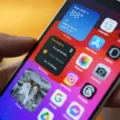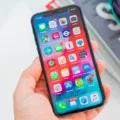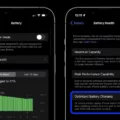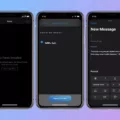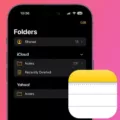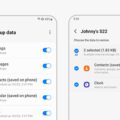When you encounter the frustrating issue of having no service or signal on your iPhone 8 Plus, it can be quite troublesome. However, there are several steps you can take to troubleshoot and potentially fix this problem.
Firstly, try restarting your phone. This simple step can often resolve minor software glitches that may be causing the no service issue. By turning your phone off and then on again, you give it a fresh start and a chance to reconnect to the network.
If a simple restart doesn’t work, you can try toggling Airplane Mode on and off. This can help reset your phone’s network connections and potentially restore service. To do this, go to your phone’s settings and find the Airplane Mode option. Turn it on, wait a few seconds, and then turn it off again.
If neither of these steps work, you can manually select your network provider. Sometimes, your phone may struggle to automatically connect to the strongest available network. By manually selecting your network, you can ensure that you’re connecting to the right one. Go to your phone’s settings, find the Mobile Data or Cellular Data option, and look for Network Operators or Carrier. From there, you can choose your preferred network provider.
Another thing to check is your SIM card. Make sure it is properly inserted into your phone and hasn’t been damaged. You can try removing the SIM card, cleaning it gently, and reinserting it to see if that helps restore service.
If none of these steps work, you can consider restoring your phone to its factory settings. This should be a last resort, as it will erase all data on your device. However, it can sometimes resolve more persistent software issues. Before proceeding with a factory reset, make sure to back up your important data.
If you receive an alert saying “Invalid SIM” or “No SIM Card installed,” there are a few additional steps you can take. First, ensure that you have an active plan with your wireless network provider. Restart your iPhone and check for any network provider settings updates. On iPhone 8 or later models, you can do this by pressing and quickly releasing the volume up button, then the volume down button, and finally holding the side button until you see the Apple logo.
These steps should help you troubleshoot and potentially fix the no service issue on your iPhone 8 Plus. Remember to try them in order and be patient, as it may take a few tries to resolve the problem.
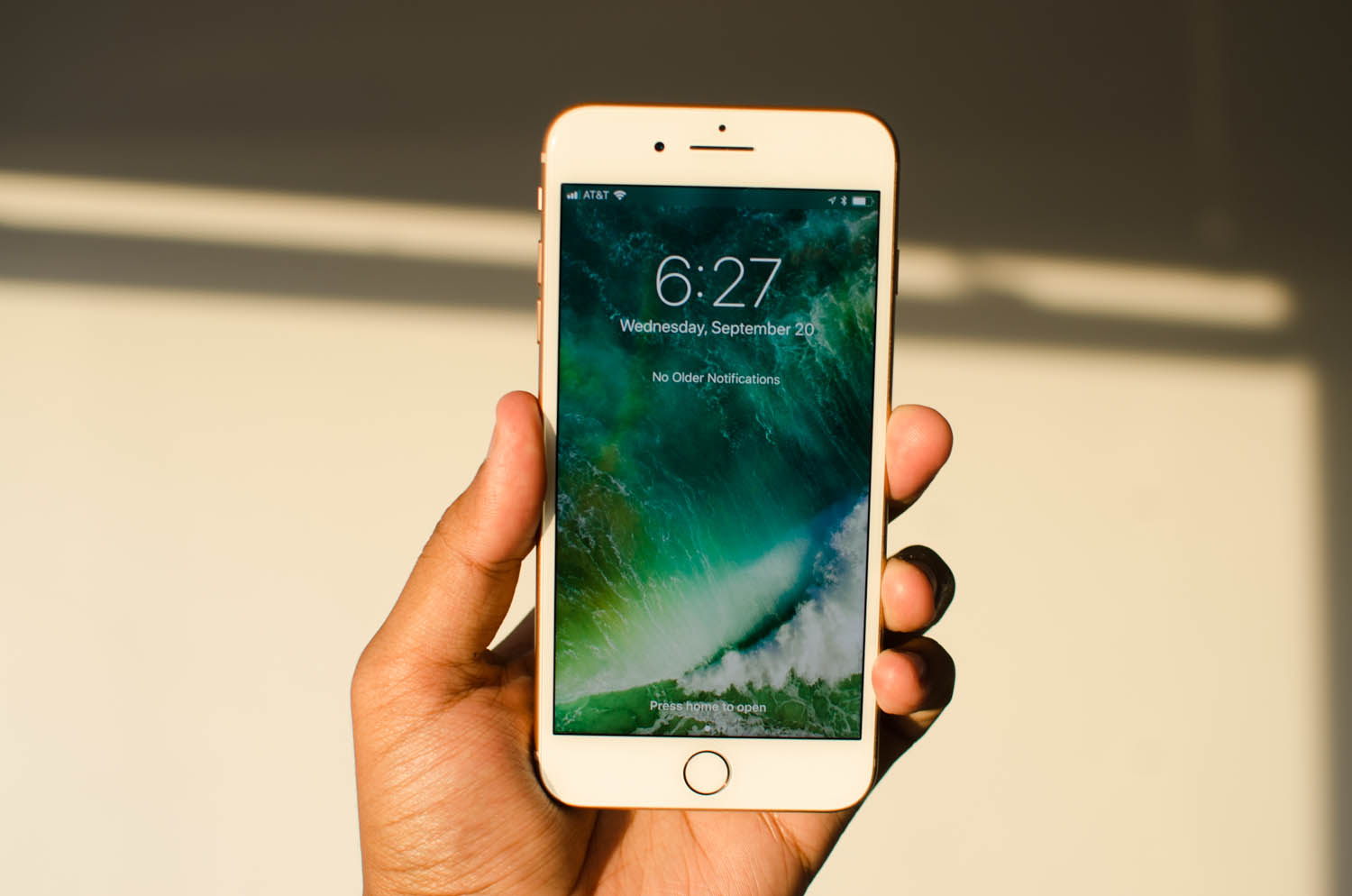
Why is Your iPhone Coming Up With No Service?
There are several possible reasons why your iPhone may be displaying “No Service.” Here are some common causes:
1. Signal issues: Your iPhone may not be receiving a strong enough signal from your mobile network. This can happen if you are in an area with poor coverage or if there is interference blocking the signal. You can try moving to a different location or contacting your service provider for assistance.
2. SIM card issues: If your iPhone is not detecting a SIM card, it will show “No Service.” This can happen if the SIM card is not properly inserted, damaged, or expired. Try removing the SIM card, cleaning it, and reinserting it securely. If the problem persists, you may need to contact your service provider for a replacement SIM card.
3. Software issues: Sometimes, a software glitch can cause the “No Service” error. You can try restarting your iPhone to see if that resolves the issue. If not, you can also try resetting your network settings. Go to Settings > General > Reset > Reset Network Settings. Keep in mind that this will remove your saved Wi-Fi passwords.
4. Carrier settings update: Occasionally, your iPhone may require an update to the carrier settings. These settings help your iPhone connect to the correct network. To check for updates, go to Settings > General > About. If an update is available, you will be prompted to install it.
5. Hardware problems: In some cases, hardware issues can cause the “No Service” error. This could be a problem with the iPhone’s antenna, SIM card tray, or other internal components. If you suspect a hardware issue, it is best to contact Apple Support or visit an authorized service center for further assistance.
Remember, these are just some of the possible reasons why your iPhone may be showing “No Service.” It is always recommended to troubleshoot the issue and seek professional help if needed.
How Do You Fix Your Phone If It Says No Service?
To fix the issue of no service or signal on your Samsung or Android phone, you can try the following steps:
1. Restart your phone: Sometimes, a simple restart can resolve connectivity issues. Turn off your phone, wait for a few seconds, and then turn it back on.
2. Turn Airplane Mode on and off: Swipe down from the top of your screen to access the quick settings panel and tap on the Airplane Mode icon to enable it. Wait for a few seconds and then turn it off again. This can help refresh your network connection.
3. Manually select your network provider: Go to the Settings menu on your phone, then tap on “Connections” or “Network & Internet.” Look for the “Mobile Network” or “Cellular Network” option and choose “Network Operators” or “Carrier.” Select your network provider from the list, or choose the option to search for networks. This can help your phone connect to a stronger network signal.
4. Double check your SIM card: Ensure that your SIM card is properly inserted and not damaged. Try removing the SIM card, cleaning the metal contacts with a soft cloth, and reinserting it securely. If you have access to another phone, you can also try inserting your SIM card into it to see if the issue persists.
5. Restore your phone to its factory settings: This should be considered as a last resort, as it will erase all data on your phone. To do this, go to the Settings menu, then tap on “System” or “General Management.” Look for the “Reset” or “Backup & Reset” option and choose “Factory data reset” or “Reset phone.” Follow the on-screen instructions to proceed with the reset.
If none of these steps resolve the issue, it is recommended to contact your mobile service provider or visit a service center to further diagnose and fix the problem.
Why Won’t Your iPhone 8 Read Your SIM Card?
There can be several reasons why your iPhone 8 may not be reading your SIM card. Here are some possible explanations:
1. SIM card not properly inserted: Ensure that the SIM card is correctly inserted into the SIM tray. Remove the tray, carefully place the SIM card into it, and then reinsert it into your iPhone.
2. SIM card damaged or faulty: Examine the SIM card for any signs of damage, such as scratches, bends, or dirt. If it appears to be damaged, contact your network provider for a replacement SIM card.
3. SIM card compatibility: Confirm that your iPhone 8 is compatible with the type of SIM card you are using. Some older SIM cards may not be compatible with newer iPhone models. Check with your network provider to ensure you have the correct SIM card for your device.
4. Software or network settings issue: Restart your iPhone to refresh its system. Sometimes, a simple restart can resolve software glitches that may be preventing your device from reading the SIM card. Additionally, check for any network provider settings updates by going to Settings > General > About. If an update is available, follow the prompts to install it.
5. Network provider issues: Contact your network provider to verify that your account is active and in good standing. They can also check if there are any network issues in your area that may be affecting your SIM card’s connectivity.
6. Hardware problem: If none of the above solutions work, there may be a hardware problem with your iPhone’s SIM card reader. In this case, it is recommended to visit an authorized service center or contact Apple Support for further assistance.
Please note that these steps are general troubleshooting suggestions and may not resolve all SIM card-related issues. It is always best to consult with your network provider or Apple Support for specific troubleshooting steps tailored to your situation.
What to Do If Your iPhone 8 Plus Won’t Turn On?
If you are facing the issue where your iPhone 8 Plus is not turning on, there are several steps you can take to troubleshoot and potentially resolve the problem. Follow these steps in order:
1. Check the battery: Make sure your iPhone has enough charge by connecting it to a power source using the original charging cable and adapter. Allow it to charge for at least 15 minutes. If the battery is completely drained, it may take a few minutes for the charging symbol to appear on the screen.
2. Force restart: If your iPhone is unresponsive and won’t turn on, you can try force restarting it. Press and quickly release the volume up button, then press and quickly release the volume down button. press and hold the side button until you see the Apple logo. This may help restart the device.
3. Check for physical damage: Inspect your iPhone for any signs of physical damage, such as a cracked screen or water damage. If you find any, it’s best to take your iPhone to an authorized service center for further assessment and repair.
4. Update the software: Connect your iPhone to a computer with iTunes installed. Open iTunes and check if an update is available for your device. If an update is available, follow the on-screen instructions to update your iPhone’s software. Updating the software can sometimes fix issues that prevent the device from turning on.
5. Reset settings: If the above steps didn’t work, you can try resetting your iPhone’s settings. Go to Settings > General > Reset and choose “Reset All Settings.” Keep in mind that this will reset all your personalized settings, but it won’t delete any data or media on your device.
6. Contact Apple Support: If none of the previous steps resolve the issue, it’s recommended to contact Apple Support or visit an Apple Store for further assistance. They can help diagnose the problem and provide appropriate solutions or repair options.
Remember, these troubleshooting steps are general suggestions, and the exact steps may vary depending on your specific situation or iOS version.
Conclusion
If you are experiencing the issue of “No Service” on your iPhone 8 Plus, there are several steps you can take to try and resolve the problem.
First, restart your phone to refresh the network settings and clear any temporary glitches. This simple step often resolves connectivity issues.
Next, check if Airplane Mode is turned on. If it is, turn it off and wait a few seconds before turning it back on. This can help reset your network connections and potentially restore service.
If restarting and toggling Airplane Mode doesn’t work, manually selecting your network provider might help. Go to your phone’s settings, navigate to the Mobile Data section, and choose your network provider from the available options. This can force your phone to connect to a specific network and may resolve the no service issue.
Another important step is to double-check your SIM card. Ensure it is properly inserted and not damaged. If necessary, try removing the SIM card and reinserting it. This can help establish a secure connection and restore service.
If none of these steps work, you can consider restoring your iPhone 8 Plus to its factory settings. However, it’s important to note that this will erase all data on your phone, so make sure to back up your important files beforehand. Restoring your device can fix any software-related issues that might be causing the no service problem.
If you continue to experience no service on your iPhone 8 Plus, it may be necessary to contact your wireless network provider for assistance. They can check if there are any network outages in your area or help troubleshoot the issue further.
Remember, each situation may be unique, and these steps may not guarantee a resolution in every case. If you are unsure or uncomfortable performing any of these steps, it is always recommended to seek professional help or contact Apple Support for guidance.






